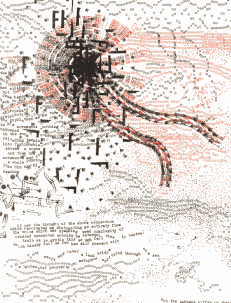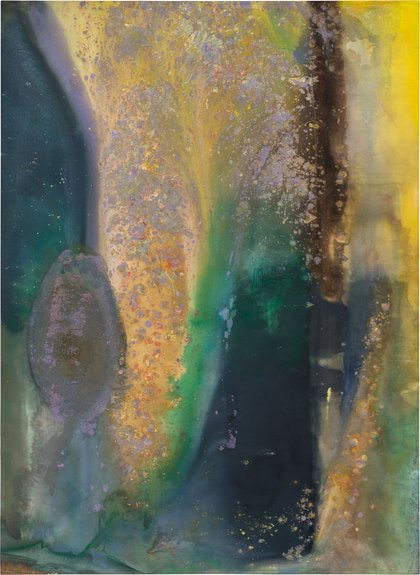 Having sorted out Vision (aye, aye), we move onto Sound ('ere, 'ere) for this week's Humanities theme. Homework includes Chris Watson's extraordinary natural history recordings eg Glaciers cracking - atmospheric and minute, interspersed with what he calls quietness rather than silence Evan Parker Saxophonist with Birds woven together by a sound technician - or should that be sound artist? The Listening Service, R3, What is Sound Art and Why? Tom Service questions and slightly mocks the label Sound Art. And for an overview we are asked to read Sonic Modernity: Representing Sound in Literature Culture and the Arts, by Sam Halliday. Loved the complex visuals using word patterns and design of Steve McAfferty's Carnival (pictured) but found the performance baffling. What I haven't yet got to are Leah Toth re-listening to Virginia Woolf Sound Transduction and Private Listening in Mrs Dalloway and The Order of Things : An Anthology of Scottish Sound, Pattern and Concrete Poems. I'm not slipping - honest -but am easily diverted...for example to the Interview with John Cage on Silence (You Tube) and how he loves the activity of sound from constant stream of traffic outside his window in New York. Read more about Kandinsky's Compositions and Improvisations where he visualises music in paint. He also worked with Schoenberg (and they even had a shared interest in one of my heroes, Rudolf Steiner, not sure my daughters have forgiven me for sending them to a Steiner School in Cambridge) Then I meandered to the poetry of Edwin Morgan and a tribute to him (Scottish Poetry Library). I looked into concrete poetry - visualisation of form on the page, words and letters spread out and arranged to relate to content - to be read out loud. Rather than reading poetry I listen to it via recordings ideally by the author although Richard Burton reading Dylan Thomas is a great substitute. Other favourites are Kate Tempest reading her work, John Masefield reading Sea Fever and WS Graham reading The Nightfishing. New entertaining and down to earth discovery this week - Tom Leonard here reading Unrelated Incidents. After the seminar, I head back to the beach to clear my head and and tune in my ears. So many variations in the sound of the sea. This evening it's the slight trickling of the lapping waves pulling back hordes of tiny stones to make a prickly noise like static or an old vinyl record, fuzzy radio, morse code. Sound? Sure is. Can it be used in Art? Why not? Does that make it Sound Art? Pass. This week also led me to discover the mysterious and subtle paintings of Guyana-born British Frank Bowling (below) via a Tate podcast The Art of Improvisation. Ideal for next week's philosophy topics.
0 Comments
Leave a Reply. |
Keeping on keeping on
|

 RSS Feed
RSS Feed